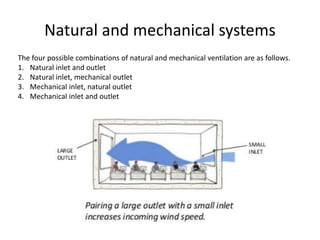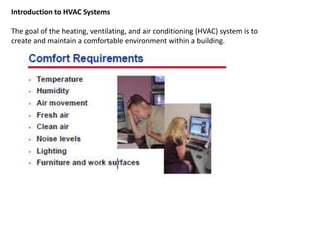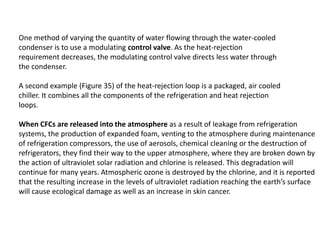The document discusses four main loops that make up HVAC systems: the airside loop, which conditions and circulates air; the chilled water loop, which cools water for use in cooling coils; the refrigeration loop, which provides chilled water to the chilled water loop; and the heat rejection loop, which removes heat from the refrigeration loop, typically using a cooling tower or dry cooler. Each loop contains key components like fans, pumps, cooling coils, compressors, and heat exchangers, and they work together to provide thermal comfort inside buildings.












































